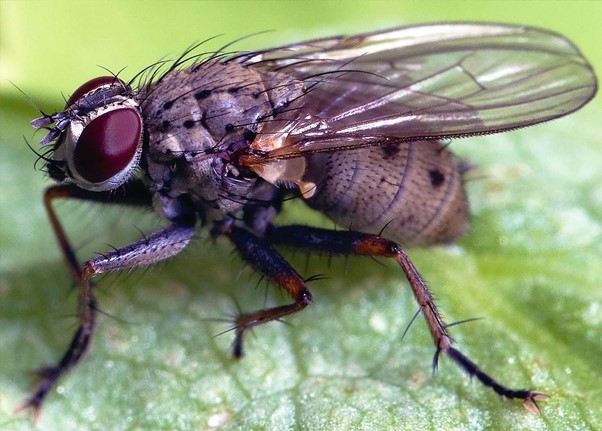Battling household pests is a common challenge faced by homeowners and renters alike. Whether it’s the buzz of mosquitoes, the scurry of rodents, or the sight of cockroaches, these unwanted guests can not only cause discomfort but also pose significant health risks. In this guide, we’ll explore effective strategies and practical tips to eliminate common household pests, ensuring your living space remains safe, healthy, and pest-free. From natural remedies to preventive measures, you’ll discover how to tackle these nuisances head-on and prevent their return.
Identifying Common Pests
The first step in pest control is identifying what you’re dealing with. Common household pests include ants, cockroaches, rodents, mosquitos, and bedbugs. Each pest has distinct characteristics and habits, which can influence the approach to control and elimination. Knowing whether you’re facing a solitary pest or an infestation can also determine the urgency and methods of treatment.
Identifying pests accurately allows for more effective targeting with remedies and prevention strategies. For instance, ant infestations may require different solutions than those for cockroaches or rodents, highlighting the importance of proper identification. Employing the correct tactics ensures not only the removal of pests but also minimizes the chances of harm to your household and the environment.
Natural Remedies for Pest Control
Utilizing natural remedies can be an effective and eco-friendly approach to combating household pests. For example, diatomaceous earth is a non-toxic powder that can be used to eliminate ants, cockroaches, and fleas by dehydrating them. Essential oils, such as peppermint and tea tree oil, are also popular for their pest-repellent properties and can be used in various areas of the home.
Another effective natural remedy is the use of vinegar. It works wonders against ants and fruit flies due to its acidity. Applying these natural solutions not only reduces your exposure to harmful chemicals but also contributes to a safer environment for pets and children.
To find out if you have pest problems, you can also set up DIY traps using simple household items such as sugar water for ants, beer for slugs and snails, and a mixture of vinegar and dish soap for fruit flies. These traps can help monitor the extent of your infestation and aid in treatment. The folks from ORKIN note that the quiet of the night often reveals the secret activities of mice. These sounds are not just random; they indicate specific behaviors. Noises at night are different from those during the day because mice are nocturnal, relying on darkness and quietness to move around undetected. Such insights can inform your pest control strategies.
Preventive Measures
Preventive measures are crucial in keeping pests at bay and avoiding infestations. Regularly inspecting your home for signs of pests, sealing cracks and openings, and ensuring your home is clean and free of food scraps are effective strategies. Proper garbage management and storage of food in airtight containers can significantly reduce the likelihood of attracting pests.
Additionally, maintaining a dry environment by fixing leaks and ensuring proper ventilation can deter pests that thrive in moist conditions, such as cockroaches and silverfish. These preventive steps create an inhospitable environment for pests, preventing their entry and settlement in your home.
Monitoring and Maintenance
After addressing a pest issue, regular monitoring and maintenance are essential to ensure pests do not return. This includes continued use of natural repellents, periodic checks of vulnerable areas, and adherence to preventive measures. Keeping a log of any pest activity can help detect new problems early and allow for prompt action.
Engaging in a routine of cleanliness, proper food storage, and moisture control can significantly reduce the risk of future infestations. Remember, the goal is not only to remove existing pests but to create an environment that is inherently resistant to pest occupancy. This ongoing effort helps maintain a healthy and pest-free home.
DIY Pest Control Techniques
In the world of do-it-yourself pest control, knowledge, and creativity can serve as powerful tools. Incorporating specific DIY techniques, such as creating natural repellent sprays from essential oils or utilizing household items like boric acid for cockroach control, can offer effective solutions without relying on professional services.
Homemade traps, such as a jar lined with petroleum jelly for catching ants or a soda bottle cut and inverted with bait for flies, can be surprisingly effective for managing minor infestations. It’s important to approach DIY pest control with caution, ensuring that the methods used are safe for the household and the environment. By combining preventive measures with targeted DIY solutions, homeowners can tackle pest problems with confidence, keeping their living spaces clean and pest-free.

In conclusion, managing household pests effectively requires a combination of identification, natural remedies, preventive measures, monitoring, and DIY tactics. By understanding the specific pests you are dealing with and employing a strategic approach to control and prevent them, you can maintain a healthy and welcoming living environment.
The key to successful pest management is consistency and vigilance. Incorporating these practices into your daily routine ensures not only the elimination of current pests but also protection against future infestations. Whether you opt for natural solutions or DIY techniques, a pest-free home is achievable with informed effort and perseverance.

Recent Comments